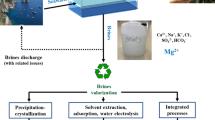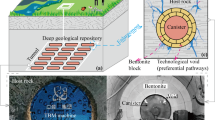Abstract
Drilling fluid is considered to be the backbone of any drilling activity. Therefore, proper formulation of this element is the key factor for any successful drilling operations. Failure to do so will result in catastrophic events such as kick, loss circulation, blowout, or even abandonment of the well. During this study, a water-based drilling fluid (WBDF) was formulated and was tested for filtration properties. Next a 2n factorial sensitivity analysis was executed on the mud systems after the addition of one nanoparticle and two polymers. These additives were nanoparticles graphene oxide and polymers pure-bore and sodium alginate that were used in varying concentration in the mud system. A total of 8 experimental runs after the addition of the particles were conducted in the laboratory, and the influence of the particle concentration on the filtrate loss volume was statistically examined. It was observed that both the polymers played a significant role in controlling the loss of filtrate volume. An increase in concentrations of the polymers reduces the loss of filtrate volume from the mud system. These polymers block the pores in the filter paper, which eventually decreases the filtrate volume. On the other hand, GO concentration was not significant in this study. At higher concentration, GO forms agglomeration; this had no significant influence on the filtrate reduction. However, when GO is used in conjunction with polymers, its performance increases. An infiltrate interphase is established that reduces the filtrate volume. Additionally, the interaction between the polymers was also not substantial. Both polymers tangled around one another and decrease their impact on filtration loss. All these analysis helped in designing the mud system on larger scale. The application of full factorial design in formulation of the mud system drastically reduces the overall project cost, time, and number of runs of experiment.












Similar content being viewed by others
Abbreviations
- WBDF:
-
Water-based drilling fluid
- GO:
-
Graphene oxide
- OBM:
-
Oil-based mud system
- TGA:
-
Thermogravimetric analysis
- KCL:
-
Potassium chloride
- α :
-
Significance level
- FL:
-
Filtrate loss
- FV:
-
Filtrate volume
- FDM:
-
Factorial design matrix
References
Abdo JH (2012) Nano-enhanced drilling fluids: pioneering approach to overcome uncompromising drilling problems. J. Energy Resour. Technol. 134:1–6
Adnan Aftab MA, Arif M, Panhwar S, Cata NM, Saady EA, Al-Khdheeawi OM, Ismail AR, Keshavarz A, Iglauer S (2020) Influence of tailor-made TiO2/API bentonite nanocomposite on drilling mud performance: towards enhanced drilling operations. Appl. Clay Sci. 199(105862)
Aftab A, Ismail AR, Khokhar S, Ibupoto ZH (2016) Novel zinc oxide nanoparticles deposited acrylamide composite used for enhancing the performance of water-based drilling fluids at elevated temperature conditions. J. Pet. Sci. Eng. 146:1142–1157
Aftab AA, Ismail AR, Ibupoto ZH, Akeiber H, Malghani MG (2017) Nanoparticles based drilling muds a solution to drill elevated temperature wells: a review. Renewable Sustainable Energy Rev. 76:1301–1313
Aftab A, Ismail AR, Ibupoto ZH (2017) Enhancing the rheological properties and shale inhibition behavior of water-based mud using nanosilica, multi-walled carbon nanotube, and graphene nanoplatelet. Egypt. J. Pet. 26(2):291–299
Ali Rafieefar FS (2021) Abdolnabi Hashemi, and Ali Mohammad Bazargan, Rheological behavior and filtration of water-based drilling fluids containing graphene oxide: experimental measurement, mechanistic understanding, and modeling. ACS Omega 6(44):29905–29920
Aziz Homayouni MRE, Azizi A, Yarmand MS, Hadi Razavi S (2007) Effect of lecithin and calcium chloride solution on the microencapsulation process yield of calcium alginate beads. Iran. Polym. J. 16(9):597–606
Bayat AE, Moghanloo PJ, Piroozian A, Rafati R (2018) Experimental investigation of rheological and filtration properties of water-based drilling fluids in presence of various nanoparticles. Colloids Surf. A Physicochem. Eng. Asp. 555:256–263
Carvalhal AS, Costa GMN, de Melo SABV (2021) Full factorial sensitivity analysis of asphaltene precipitation and deposition in CO2 and CH4 coreflooding. J. Pet. Sci. Eng. 197(108098)
Elkatatny S (2019) Enhancing the rheological properties of water-based drilling fluid using micronized starch. Arab J Sci Eng 44:5433–5442
Eny Kusrini FO, Usman A, Mawarni DP, Alhamid MI (2020) Synthesis, characterization, and performance of graphene oxide and phosphorylated graphene oxide as additive in water-based drilling fluids. Appl. Surf. Sci. 506(145005)
Fangfu Zhang HX, Konishi H, Shelobolina ES, Roden EE (2012) Polysaccharide-catalyzed nucleation and growth of disordered dolomite: a potential precursor of sedimentary dolomite. Am. Mineral. 97:556–567
Florián-Algarín V, Acevedo A (2010) Rheology and thermotropic gelation of aqueous sodium alginate solutions. J. Pharm. Innov 5:37–44
Ismail AR, Mohd NMNA, Basir NF et al (2020) Improvement of rheological and filtration characteristics of water-based drilling fluids using naturally derived henna leaf and hibiscus leaf extracts. J Petrol Explor Prod Technol 10(3541-3556)
Kai Wang GJ, Li X, Luckham PF (2020) Study of graphene oxide to stabilize shale in water-based drilling fluids. Colloids Surf. A Physicochem. Eng. Asp 606(125457)
Kim J, Cote LJ, Huang J (2012) Two dimensional soft material: new faces of graphene oxide. Acc Chem Res 45(8):1356–1364
Kosynkin DV, Ceriotti G, Wilson KC, Lomeda JR, Scorsone JT, Patel AD, Friedheim JE, Tour JM (2012) Graphene oxide as a high-performance fluid-loss-control additive in water-based drilling fluids. ACS Appl. Mater. Interfaces 4(1):222–227
Kumar N, Das S, Bernhard C, Varma GD (2013) Effect of graphene oxide doping on superconducting properties of bulk MgB2. Supercond Sci Technol 26(095008)
Lalji SM, Ali SI, Awan ZUH et al (2021a) A novel technique for the modeling of shale swelling behavior in water-based drilling fluids. J Petrol Explor Prod Technol 11:3421–3435
Lalji SM, Khan MA, Haneef J et al (2021b) Nano-particles adapted drilling fluids for the swelling inhibition for the Northern region clay formation of Pakistan. Appl Nanosci
Lalji SM, Ali SI, Ahmed R et al (2022a) Influence of graphene oxide on salt-polymer mud rheology and Pakistan shale swelling inhibition behavior. Arab J Geosci 15(612)
Lalji SM, Ali SI, Haneef J et al (2022b) Changes in Pakistan crude oil properties contaminated by water-based drilling fluids with varying KCL concentrations. Chem. Pap:1–13
Lalji SM, Ali SI, Awan ZUH et al (2022c) Development of modified scaling swelling model for the prediction of shale swelling. Arab J Geosci 15(353)
Lalji SM, Ali SI, Sohail H et al (2022d) Combine effect of graphene oxide, pure-bore and sodium alginate on rheological and filtration properties and cutting carrying capacity of water-based drilling fluid. Chem. Pap. 76(10):6461–6473
Le Ba T, Mahian O, Wongwises S et al (2020) Review on the recent progress in the preparation and stability of graphene-based nanofluids. J Therm Anal Calorim 142:1145–1172
Lee KY, Mooney DJ (2012) Alginate: properties and biomedical applications. Prog Polym Sci. 37(1):106–126
Mahmud HB, Mahmud WM, Ayanarappan R, Elmabrouk S (2020) Effect of sodium carbonate and bicarbonate contamination on the rheological properties of water based mud. Int. J. Eng. Res. Technol. 13(5):1019–1029
Mehran Sadeghalvaad SS (2015) The effect of the TiO2/polyacrylamide nanocomposite on water-based drilling fluid properties. Powder Tech. 272:113–119
Moraes LR, Ribeiro H, Cargnin E, Andrade RJ, Naccache MF (2020) Rheology of graphene oxide suspended in yield stress fluid. J Nonnewton Fluid Mech 286(104426)
Mohanty US, Awan FU, Ali M, Aftab A, Keshavarz A, Iglauer S (2021) Physicochemical characterization of zirconia nanoparticle-based sodium alginate polymer suspension for enhanced oil recovery. Energy Fuels 35(23):19389–19398
Murtaza M et al (2021) Experimental investigation of the rheological behavior of an oil-based drilling fluid with rheology modifier and oil wetter additives. Molecules 26(16):4877
Nandiyanto AB, Oktiani R, Ragadhita R (2019) Ragadhita R How to read and interpret FTIR spectroscope of organic material. Indones J Sci Technol 4(1):97–118
Prakash V, Sharma N, Bhattacharya M (2021) Effect of silica nano particles on the rheological and HTHP filtration properties of environment friendly additive in water-based drilling fluid. J Petrol Explor Prod Technol 11:4253–4267
Priyadarsini S, Mohanty S, Mukherjee S et al (2018) Graphene and graphene oxide as nanomaterials for medicine and biology application. J Nanostruct Chem:8(123-137)
Putra PH, Jan BM, Patah MF, Junaidi MU (2020) Effect of temperature and concentration of industrial waste graphene on rheological properties of water based mud. IOP Conf. Ser.: Mater. Sci. Eng 778:012120
Rabia Ikram BMJ, Ahmad W (2020) An overview of industrial scalable production of graphene oxide and analytical approaches for synthesis and characterization. J. Mater. Res. Technol 9(5):11587–11610
Rafieefar A, Sharif F, Hashemi A, Bazargan AM (2021) Rheological behavior and filtration of water-based drilling fluids containing graphene oxide: experimental measurement, mechanistic understanding, and modeling. ACS Omega 6(44):29905–29920
Ramanathan T, Abdala AA, Stankovich S, Dikin DA, Herrera-Alonso M, Piner RD, Adamson DH, Schniepp HC, Chen XR, Ruoff RS, Nguyen ST (2008) Functionalized graphene sheets for polymer nanocomposites. Nat. Nanotech 3:327–331
Rezaei A, Nooripoor V, Shahbazi K (2020) Applicability of Fe3O4 nanoparticles for improving rheological and filtration properties of bentonite-water drilling fluids in the presence of sodium, calcium, and magnesium chlorides. J Petrol Explor Prod Technol 10:2453–2464
Ridha S, Ibrahim A, Shahari R, Fonna S (2018) Graphene nanoplatelets as high-performance filtration control material in water-based drilling fluids. IOP Conf Ser Mater Sci Eng 352:012025
Rúben Pereira AT, Vaz DC, Mendes A, Bártolo P (2011) Preparation and characterization of films based on alginate and aloe vera. Int. J. Polym. Anal. 16(7):449–464
Shahryari Z et al (2021) A brief review of the graphene oxide-based polymer nanocomposite coatings: preparation, characterization, and properties. J Coat Technol Res 18(4):945–969
Shalafi M, Moradi S, GhassemAlaskari MK et al (2016) Drilling fluid loss control via implementing the FMI and DSI logs to protect environment. Model. Earth Syst. Environ. 2:1–10
Torres FG, Troncoso OP, Pisani A, Gatto F, Bardi G (2019) Natural polysaccharide nanomaterials: an overview of their immunological properties. Int J Mol Sci. 20(20):5092
Wang S et al (2021) Surface functionalization of graphene oxide with polymer brushes for improving thermal properties of the polymer matrix. Adv. Polym. Technol. 2021:5591420
XianyuYang ZS (2017) Hengwei Liu, Jihua Cai Guosheng Jian, Environmental-friendly salt water mud with nano-SiO2 in horizontal drilling for shale gas. J. Pet. Sci. Eng. 156:408–418
Zhang BL (2013) Fusui & Liao, Kechao & Li, Peiqiang, Effect of sodium alginate on the rheological properties of difenoconazole suspension concentrates. J Food Agric Environ 11(2):553–556
Author information
Authors and Affiliations
Corresponding author
Ethics declarations
Conflict of interest
The authors declare that they have no competing interests.
Additional information
Responsible Editor: Santanu Banerjee
Rights and permissions
Springer Nature or its licensor (e.g. a society or other partner) holds exclusive rights to this article under a publishing agreement with the author(s) or other rightsholder(s); author self-archiving of the accepted manuscript version of this article is solely governed by the terms of such publishing agreement and applicable law.
About this article
Cite this article
Lalji, S.M., Ali, S.I., Yousufi, M.M. et al. Factorial analysis for the impact on filtration properties of water-based drilling fluid after the addition of graphene oxide, pure-bore, and sodium alginate. Arab J Geosci 16, 132 (2023). https://doi.org/10.1007/s12517-023-11227-1
Received:
Accepted:
Published:
DOI: https://doi.org/10.1007/s12517-023-11227-1




